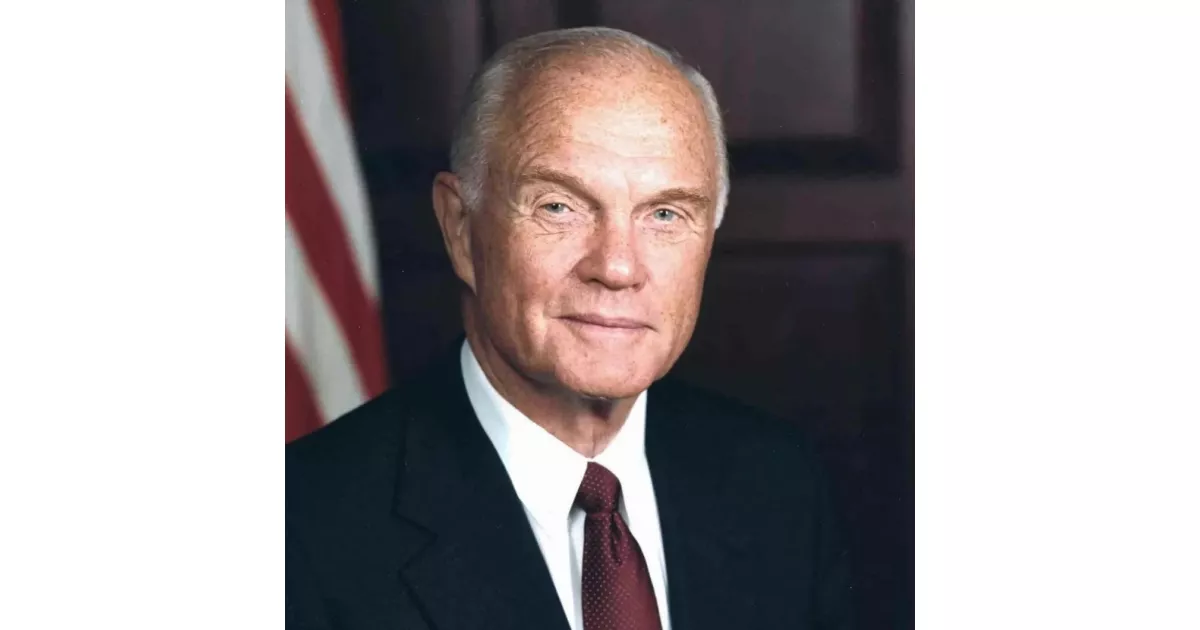"John Herschel Glenn Jr. was a multifaceted American figure who achieved renown as a Marine Corps aviator, astronaut, businessman, and politician. He became the third American in space and the first to orbit the Earth, accomplishing this feat in 1962. After leaving NASA, he served as a U.S. Senator for Ohio from 1974 to 1999. Remarkably, at the age of 77, he returned to space in 1998."
July 18, 1921: Birth of John Glenn
John Herschel Glenn Jr. was born on July 18, 1921, in Cambridge, Ohio.
1939: Graduation from New Concord High School
John Glenn graduated from New Concord High School in 1939.
1941: Civilian Pilot Training Program
John Glenn earned a private pilot license and a physics course credit through the Civilian Pilot Training Program in 1941.
March 1942: Enlistment as a U.S. Navy Aviation Cadet
John Glenn enlisted as a U.S. Navy aviation cadet in March 1942.
1942: Annie Castor's Graduation from Muskingum College
Annie Castor, John Glenn's future wife, graduated from Muskingum College in 1942.
March 1943: Commissioned as a Second Lieutenant
John Glenn completed his flight training and was commissioned as a second lieutenant in March 1943.
April 6, 1943: Marriage to Annie Castor
John Glenn married Annie Castor in a Presbyterian ceremony at College Drive Church in New Concord, Ohio, on April 6, 1943.
July 2, 1943: Transfer to VMO-155
John Glenn was posted to VMO-155 on July 2, 1943.
September 1943: Re-equipment with F4U Corsair
VMO-155 re-equipped with the F4U Corsair in September 1943.
October 1943: Promotion to First Lieutenant
John Glenn was promoted to first lieutenant in October 1943.
June 1944: Deployment to the Marshall Islands
VMO-155 moved to the Marshall Islands in June 1944 and flew 57 combat missions in the area.
February 1945: Assignment to Marine Corps Air Station Cherry Point
At the end of his one-year tour of duty in February 1945, John Glenn was assigned to Marine Corps Air Station Cherry Point in North Carolina.
July 1945: Promotion to Captain
John Glenn was promoted to captain in July 1945.
March 1946: Assignment to Marine Corps Air Station El Toro
In March 1946, John Glenn was assigned to Marine Corps Air Station El Toro in southern California.
December 1946: Deployment to Nanyuan Field
John Glenn joined VMF-218, based at Nanyuan Field near Beijing, in December 1946, and flew patrol missions.
December 1948: Naval School of All-Weather Flight
In December 1948, John Glenn was re-posted to NAS Corpus Christi as a student at the Naval School of All-Weather Flight.
July 1951: Amphibious Warfare School
In July 1951, John Glenn traveled to the Amphibious Warfare School at Marine Corps Base Quantico for a six-month course.
July 1952: Promotion to Major
John Glenn was promoted to major in July 1952.
October 1952: Ordered to South Korea
After a short leave and jet training, John Glenn was ordered to South Korea in October 1952 during the Korean War.
February 3, 1953: Arrival in South Korea
On February 3, 1953, John Glenn arrived at K-3 airbase in South Korea and was assigned to be the operations officer for VMF-311 while waiting for his exchange assignment to go through.
February 1953: Preparation for Korea
In February 1953, before leaving for Korea, John Glenn applied to fly F-86 Sabre jet fighter-interceptors through an inter-service exchange program with the U.S. Air Force.
June 1953: Transfer to USAF Squadron
In June 1953, John Glenn started his duty with the USAF's 25th Fighter-Interceptor Squadron, flying the F-86 fighter jet.
July 12, 1953: First MiG Shootdown
John Glenn shot down his first MiG in a dogfight on July 12, 1953, marking a significant achievement for a fighter pilot during the Korean War.
January 1954: Test Pilot School
John Glenn started his training as a test pilot at the U.S. Naval Test Pilot School at NAS Patuxent River in January 1954.
November 1956: Assignment at the Navy Bureau of Aeronautics
In November 1956, John Glenn was assigned to the Fighter Design Branch of the Navy Bureau of Aeronautics in Washington, D.C.
July 16, 1957: First Supersonic Transcontinental Flight
On July 16, 1957, John Glenn completed the first supersonic transcontinental flight, flying an F8U Crusader from California to New York in record time.
October 4, 1957: Launch of Sputnik 1
The Soviet Union launched Sputnik 1 on October 4, 1957, marking the beginning of the Space Race between the U.S. and the Soviet Union.
1957: First Supersonic Transcontinental Flight
John Glenn made the first supersonic transcontinental flight across the United States in 1957, capturing the first continuous, panoramic photograph of the country.
October 1, 1958: Establishment of NASA
On October 1, 1958, NASA was established as a civilian agency to spearhead the development of space technology in response to the Sputnik crisis.
April 1, 1959: Promotion to Lieutenant Colonel
John Glenn was promoted to Lieutenant Colonel on April 1, 1959, following his record-breaking supersonic flight.
April 9, 1959: Announcement of the Mercury Seven
The identities of the Mercury Seven astronauts were revealed on April 9, 1959, including John Glenn.
April 1959: End of Assignment at the Navy Bureau of Aeronautics
John Glenn concluded his assignment at the Navy Bureau of Aeronautics in April 1959.
May 18, 1959: Atlas Rocket Explosion
On May 18, 1959, the seven astronauts witnessed the explosion of an SM-65D Atlas rocket, highlighting the risks associated with space travel.
1959: Selection as a Mercury Seven Astronaut
John Glenn was selected as one of the Mercury Seven, military test pilots chosen by NASA in 1959 to be the nation's first astronauts.
1961: Honorary Doctorate from Muskingum University
In 1961, Muskingum University, the college that John Glenn attended before enlisting in the military during World War II, bestowed upon him an honorary Doctor of Laws (LL.D) degree. This honorary degree recognized Glenn's remarkable achievements as an astronaut and his contributions to science and exploration.
January 1962: Training for Mercury-Atlas 6
In January 1962, John Glenn and his backup, Scott Carpenter, completed their training for the Mercury-Atlas 6 mission, NASA's first crewed orbital flight. Despite the mission being postponed, they continued rehearsing, with Glenn spending significant time in the spacecraft and simulator.
February 20, 1962: Friendship 7 Mission
On February 20, 1962, John Glenn flew the Friendship 7 mission, becoming the first American to orbit the Earth.
February 23, 1962: Receiving the NASA Distinguished Service Medal
On February 23, 1962, President John F. Kennedy awarded John Glenn the NASA Distinguished Service Medal for his successful Friendship 7 flight, recognizing his role as a figurehead for the tremendous effort of the mission.
December 1962: Encouraged to Run for Senate
In December 1962, Robert F. Kennedy suggested to John Glenn and his wife that he run for the U.S. Senate in Ohio in the 1964 election, challenging the incumbent Democrat, Stephen M. Young.
1962: Colonel Glenn Road named
In 1962, Colonel Glenn Road in Little Rock, Arkansas was named in honor of John Glenn.
1962: Opposition to Women in Space
In 1962, John Glenn voiced his opposition to sending women into space during a speech to the House Space Committee, expressing his belief that it was not the time for female astronauts.
1962: First American to Orbit the Earth
John Glenn became the first American to orbit the Earth, circling it three times in 1962.
1962: Assignment to NASA Space Task Group
John Glenn was assigned to the NASA Space Task Group at Langley Research Center in 1962, where he played a key role in cockpit design and control functionality.
1962: National Geographic Society's Hubbard Medal
John Glenn's historic spaceflight aboard Friendship 7 earned him the National Geographic Society's Hubbard Medal in 1962. This prestigious award acknowledged Glenn's groundbreaking achievement as the first American to orbit the Earth, a feat that captivated the world and propelled the United States forward in the space race.
June 1963: Valentina Tereshkova's Flight
In June 1963, the Soviet Union launched Valentina Tereshkova, the first woman cosmonaut, into orbit. This event occurred during a period when NASA had no official policy barring women but required astronauts to be test pilots, effectively excluding them.
1963: John J. Montgomery Award
In 1963, John Glenn's pioneering contributions to aviation and space exploration were recognized with the prestigious John J. Montgomery Award. This award honored Glenn's exceptional achievements in the field of flight and his advancement of aeronautical knowledge.
1963: Iven C. Kincheloe Award
The Society of Experimental Test Pilots honored John Glenn with the Iven C. Kincheloe award in 1963, recognizing his outstanding achievements as a test pilot and his contributions to the advancement of aviation technology.
January 16, 1964: Resignation from NASA and Senate Candidacy
On January 16, 1964, John Glenn resigned from NASA, recognizing his limited chances of participating in Project Apollo missions. He announced his Democratic candidacy for the U.S. Senate in Ohio the following day, becoming the first astronaut to enter politics.
1964: Golden Plate Award
In 1964, John Glenn received the Golden Plate Award from the American Academy of Achievement, a recognition of his outstanding accomplishments and his status as a role model for aspiring individuals in various fields.
January 1, 1965: Retirement from the Marine Corps
John Glenn retired from the Marine Corps as a colonel on January 1, 1965, after deciding to pursue a career outside of the military and NASA.
1965: NASA Drops Test Pilot Requirement
In 1965, NASA removed the requirement for astronauts to be test pilots, opening up the possibility for women to join the astronaut corps. However, it wasn't until 1978 that the first women were selected.
1966: Death of John Glenn Sr.
John Glenn Sr., father of John Glenn, passed away in 1966.
1968: Considering a Senate Run
In 1968, John Glenn, when asked about his political aspirations, acknowledged that he was considering a potential run for a Senate seat in the future.
1968: Supporting Robert F. Kennedy
John Glenn maintained a close relationship with the Kennedy family and actively campaigned for Robert F. Kennedy during his 1968 presidential campaign. He was present when Kennedy learned of his victory in the California primary but decided not to join the celebratory gathering. Tragically, Kennedy was assassinated that night.
1968: Induction into the International Air & Space Hall of Fame
John Glenn's pioneering role in space exploration was celebrated in 1968 when he was inducted into the prestigious International Air & Space Hall of Fame. This honor acknowledged Glenn's historic spaceflight aboard Friendship 7 and his status as a global icon in the realm of aerospace achievement.
1968: William Saxbe Elected to Ohio Senate
William Saxbe was elected to the Ohio Senate in 1968. This information is relevant to the later events of 1973, when Saxbe's appointment as attorney general created a Senate vacancy.
1970: Glenn's Senate Campaign Strategy Shift
After losing the 1970 Senate election, John Glenn shifted his campaign strategy to focus on larger counties in Ohio, recognizing that he had lost in those counties with larger populations in the previous election.
1970: Appointment to Citizens Task Force on Environmental Protection
In 1970, after his defeat in the senate election, John Glenn was appointed chairman of the Citizens Task Force on Environmental Protection by Governor John J. Gilligan. This task force was put in place to research environmental issues in Ohio.
1970: Defeated in the Democratic Primary
In the 1970 Democratic primary for the U.S. Senate in Ohio, John Glenn was defeated by Howard Metzenbaum. Despite running a thrifty campaign, Glenn's opponent significantly outspent him, leading to his defeat. Some Democrats criticized his political acumen, while a newspaper labeled him "the ultimate square".
1970: Possible Senate Run
John Glenn hinted at the possibility of a 1970 Senate run, indicating his ongoing interest in pursuing a political career.
1971: Death of Clara Glenn
Clara Glenn, mother of John Glenn, passed away in 1971.
1971: Release of Environmental Report
The Citizens Task Force on Environmental Protection, led by John Glenn, released a report in 1971 detailing their findings on environmental issues in Ohio. This report contributed to the formation of the Ohio Environmental Protection Agency.
1973: Saturday Night Massacre and Ohio Senate Vacancy
Following the Saturday Night Massacre in 1973, when President Nixon ordered the firing of Watergate special prosecutor Archibald Cox, Ohio Senator William Saxbe was appointed attorney general. This created a vacancy in the Ohio Senate, which both Glenn and Howard Metzenbaum sought to fill.
1973: Investing in Hotels
In 1973, John Glenn and a friend invested in a Holiday Inn near Disney World. Their business flourished alongside the success of Disney World, leading them to build three more hotels in the area.
January 1974: Metzenbaum Appointed to Senate Seat
In January 1974, Governor John Gilligan appointed Howard Metzenbaum to the vacant Ohio Senate seat, leading to a contentious primary battle between Metzenbaum and Glenn in the subsequent election.
1974: Elected to the Senate
A member of the Democratic Party, John Glenn was first elected to the Senate in 1974.
1976: Consideration for Vice President and Unsuccessful Keynote Address
During the 1976 presidential election, John Glenn was considered as a potential running mate for Jimmy Carter. However, his keynote address at the Democratic National Convention was poorly received, and Carter ultimately chose Walter Mondale.
1976: Induction into the National Aviation Hall of Fame
In 1976, John Glenn's remarkable career as both a military pilot and an astronaut earned him a place in the National Aviation Hall of Fame. This induction recognized Glenn's exceptional skills as an aviator, his contributions to both military and civilian aviation, and his enduring legacy as a pioneer in human spaceflight.
1977: Chair of Subcommittees in Governmental Affairs
In 1977, John Glenn aimed to chair the Energy, Nuclear Proliferation, and Federal Services Subcommittee of the Governmental Affairs Committee. Although previous chairs had faced negative campaigns due to the poorly regarded mail service, Glenn accepted the offer and became the chair of both subcommittees.
1977: Induction into the International Space Hall of Fame
The International Space Hall of Fame inducted John Glenn into its prestigious ranks in 1977, solidifying his status as a global icon in the field of space exploration. This honor recognized Glenn's historic achievements, including his groundbreaking orbital flight aboard Friendship 7.
1978: Nuclear Non-Proliferation Act
In 1978, John Glenn introduced the Nuclear Non-Proliferation Act, which was the first of six major pieces of legislation he produced on the subject. This act was part of his broader efforts to promote nuclear non-proliferation.
1978: Receiving the Congressional Space Medal of Honor
In 1978, John Glenn was awarded the Congressional Space Medal of Honor by President Jimmy Carter. He had been considered for the Medal of Honor after his 1962 spaceflight but believed it wouldn't have been appropriate at the time.
1978: Masonic Recognition
In 1978, John Glenn's dedication to Freemasonry was formally acknowledged when he received all his Masonic degrees in a special "Mason at Sight" ceremony conducted by the Grand Master of Ohio. This recognition came 14 years after Glenn had initially petitioned his lodge, Concord Lodge No. 688 in New Concord, Ohio, demonstrating his enduring commitment to the fraternity.
1978: First Women Selected as Astronauts
In 1978, NASA selected its first female astronaut candidates, marking a turning point in the history of space exploration. None of the six women chosen were selected as pilots.
1979: Dispute Over SALT II Treaty
In 1979, John Glenn's stance on the SALT II treaty led to a dispute with President Carter. Glenn did not believe that the U.S. could accurately monitor Soviet compliance due to the loss of radar posts in Iran. His public comments on the issue drew criticism from First Lady Rosalynn Carter.
1980: Landslide Victory in Senate Primary
In the 1980 Senate primary, John Glenn won by a landslide against his poorly funded and lesser-known opponents, securing his place in the general election.
August 1982: Svetlana Savitskaya's Flight
August 1982 marked the return of women to spaceflight after a long hiatus. The Soviet Union launched Svetlana Savitskaya, a pilot-cosmonaut, becoming the second woman in space.
1982: Glenn Considers Presidential Run
Concerned by the country's political divide, John Glenn began considering a presidential run in 1982, believing a centrist president could unite the nation. He saw an opportunity after Ted Kennedy announced he wouldn't seek the presidency.
April 21, 1983: Announcement of Presidential Candidacy
John Glenn formally announced his candidacy for president on April 21, 1983, at John Glenn High School. He started strong, out-raising Walter Mondale and polling well against Ronald Reagan.
January 1984: National Campaign Office Expansion
By January 1984, John Glenn's presidential campaign had opened offices in 43 states, opting for a broad national strategy instead of focusing on early primaries and caucuses.
January 26, 1984: Replacement of Campaign Manager
On January 26, 1984, John Glenn replaced his campaign manager, William White, with Jerry Vento, as his presidential campaign struggled to gain momentum.
March 16, 1984: Withdrawal From Presidential Race
Following a series of losses in primaries and caucuses, John Glenn announced his withdrawal from the presidential race on March 16, 1984, leaving Walter Mondale as the Democratic frontrunner.
1984: Passing of Stephen M. Young
Stephen M. Young, the incumbent senator whom John Glenn challenged in the 1964 election, passed away in 1984.
1985: Switch to Armed Services Committee
In 1985, John Glenn left the Foreign Relations Committee to join the Armed Services Committee, marking a shift in his Senate responsibilities.
1986: Congressman Bill Nelson's Visit to Space
Congressman Bill Nelson (D-FL) visited space in 1986, preceding John Glenn's visit as a Member of Congress.
1986: Criticism After Challenger Disaster
In 1986, following the Space Shuttle Challenger disaster, John Glenn criticized the decision to send a 'lay person' into space for public support while the shuttle program was still in its early stages.
1986: Victory in Senate Election Against Kindness
In the 1986 Senate election, John Glenn successfully fended off a challenge from Republican Jim Kindness, overcoming attacks focused on his past presidential campaign debts.
1987: Chair of Committee on Governmental Affairs
In 1987, John Glenn became the chair of the Committee on Governmental Affairs. During his tenure, he discovered significant safety and environmental problems at the nation's nuclear weapons facilities and initiated investigations and hearings to address these issues.
1987: Chairman of Manpower Subcommittee
In 1987, John Glenn became the chairman of the Manpower Subcommittee of the Armed Services Committee. He introduced legislation to increase pay and benefits for American troops in the Persian Gulf during the Gulf War.
1990: Induction into the U.S. Astronaut Hall of Fame
John Glenn was inducted into the U.S. Astronaut Hall of Fame in 1990.
1992: Reprimand in Ethics Investigation
In 1992, John Glenn was reprimanded for exercising 'poor judgment' in an ethics investigation related to Charles Keating. Despite this, he was not found to have done anything wrong and successfully retained his Senate seat in the election against Mike DeWine.
1992: Senate Reelection Against Mike DeWine
John Glenn faced Republican Mike DeWine in the 1992 Senate election, securing a fourth term despite DeWine's focus on the need for change and term limits, as well as criticism of Glenn's campaign debts and involvement in the Keating Five scandal.
1993: Chairman of Military Readiness and Defense Infrastructure
By 1993, John Glenn had transitioned to chair the Armed Services Subcommittee on Military Readiness and Defense Infrastructure, continuing his focus on military issues.
1995: Nuclear Waste Cleanup Efforts
By 1995, John Glenn had spent a significant part of his Senate career acquiring funding to clean up hazardous waste left at former nuclear weapons manufacturing facilities, following the findings of his earlier investigations.
1995: Ranking Minority Member of Governmental Affairs
In 1995, John Glenn became the ranking minority member of the Committee on Governmental Affairs, where he disputed the focus on illegal Chinese donations to Democrats and asserted that Republicans also had significant fundraising issues.
1995: Proposal for Older Astronauts
In 1995, John Glenn proposed that NASA should send an older person on a shuttle mission, drawing parallels between physical changes in space and aging. He began lobbying NASA for the opportunity and conducted research to support his proposal.
1996: Continued Investigation Disputes
In 1996, John Glenn continued to face disputes with committee chair Fred Thompson over the investigation into illegal Chinese donations. The investigation concluded with a Republican-written report that Glenn and the Democrats argued did not support its conclusions.
1996: Ranking Minority Member of Investigations Subcommittee
In 1996, after the Republican Party regained control of the Senate, John Glenn became the ranking minority member on the Permanent Subcommittee on Investigations, where he investigated issues such as internet fraud, mortgage fraud, and day trading of securities.
February 20, 1997: Announcement of Senate Retirement
On February 20, 1997, marking the 35th anniversary of his Friendship 7 flight, John Glenn announced his retirement from the Senate, effective at the end of his term in January 1999. He cited his age as the reason for his retirement.
January 16, 1998: Announcement of Shuttle Mission
On January 16, 1998, NASA Administrator Dan Goldin announced that John Glenn would be part of the STS-95 crew, making him the oldest person to fly in space at age 77.
October 15, 1998: John Glenn Parkway Dedication
In a tribute to John Glenn's remarkable spaceflight on STS-95, NASA Road 1, the main route leading to the Johnson Space Center, was temporarily renamed "John Glenn Parkway" on October 15, 1998. This gesture served as a public acknowledgment of Glenn's contributions to space exploration and his enduring legacy.
October 29, 1998: Return to Space
On October 29, 1998, John Glenn embarked on his second journey to space aboard the Space Shuttle Discovery. Serving as a payload specialist, his mission involved participating in experiments focused on sleep monitoring and protein use. This flight garnered significant attention as Glenn, at the age of 77, became the oldest person to venture into space.
1998: Oldest Person to Enter Earth Orbit
At age 77, John Glenn flew on Space Shuttle Discovery's STS-95 mission in 1998, making him the oldest person to enter Earth orbit.
1998: Founding of the John Glenn Institute for Public Service and Public Policy
Driven by his belief in the importance of public service, John Glenn partnered with Ohio State University in 1998 to establish the John Glenn Institute for Public Service and Public Policy. This institute aimed to encourage and prepare students for careers in public service, reflecting Glenn's enduring commitment to giving back to the community and the nation.
1998: Flight on Space Shuttle Discovery
John Glenn flew on Space Shuttle Discovery's STS-95 mission in 1998, making him the only person to fly in both the Mercury and the Space Shuttle programs.
January 1999: End of Senate Career
In January 1999, John Glenn officially retired from the Senate, concluding his long and distinguished career in public service.
1999: Retirement from the Senate
John Glenn served as a U.S. Senator from Ohio for 24 years, until his retirement in January 1999.
1999: Elevated Status in Scottish Rite Masonry
John Glenn's journey within Freemasonry reached a significant milestone in 1999 when he attained the 33rd degree in the Scottish Rite, specifically within the Valley of Cincinnati (NMJ). This elevation signified his deep involvement and esteemed standing within the organization.
1999: End of Glenn's Senate Career
John Glenn's senate career, which began after his victory in the 1974 election, continued until 1999.
2000: U.S. Senator John Heinz Award
In 2000, John Glenn was recognized for his exceptional public service with the U.S. Senator John Heinz Award, presented by the Jefferson Awards Foundation. This award, one of the prestigious Jefferson Awards, honored Glenn's commitment to serving the nation as a U.S. Senator and his dedication to various causes, including education, science, and public policy.
2001: Opposition to Space Tourism
In 2001, John Glenn publicly expressed his opposition to sending Dennis Tito, the world's first space tourist, to the International Space Station. Glenn firmly believed that spaceflights should primarily serve scientific purposes, and he viewed Tito's trip, which lacked a defined scientific objective, as a departure from this principle.
2001: Television Appearance
In 2001, John Glenn stepped into the world of television entertainment with a guest-starring role as himself on the popular American sitcom "Frasier." This lighthearted appearance showcased a different facet of Glenn's personality, allowing him to connect with audiences in a more informal and humorous setting.
2004: Woodrow Wilson Award for Public Service
The Woodrow Wilson International Center for Scholars of the Smithsonian Institution bestowed the Woodrow Wilson Award for Public Service upon John Glenn in 2004. This accolade honored Glenn's distinguished career in public service, which spanned his time as a U.S. Senator and his ongoing advocacy for education, science, and space exploration.
2006: Ambassador of Space Exploration Award
In 2006, John Glenn, along with 37 other astronauts who played pivotal roles in the space race, was honored with the Ambassador of Space Exploration Award. This award recognized Glenn's enduring legacy as a space pioneer and his significant contributions to the advancement of human exploration beyond Earth.
2008: Theodore Roosevelt Award
In 2008, John Glenn's lifelong commitment to excellence and his embodiment of the values of sportsmanship and leadership earned him the National Collegiate Athletic Association's (NCAA) prestigious Theodore Roosevelt Award. This award, the highest honor bestowed by the NCAA, recognized Glenn's exceptional character and his enduring impact on American society.
September 5, 2009: Ohio State University Marching Band Performance
John and Annie Glenn participated in a cherished Ohio State University tradition on September 5, 2009, when they were given the honor of dotting the "i" in the university's iconic Script Ohio marching band formation during a football game halftime show against Navy. This honor is typically reserved for veteran band members, making the Glenns' participation a special tribute to their legacy.
2011: Relinquishing Pilot's License
At the age of 90, in 2011, John Glenn made the decision to relinquish his private pilot's license. This marked the end of an era for Glenn, who had maintained a lifelong passion for aviation and had a distinguished career as both a military and a NASA pilot.
2011: Congressional Gold Medal
In 2011, John Glenn received one of the highest civilian honors bestowed by the United States Congress: the Congressional Gold Medal. He was among the first group of astronauts to be granted this prestigious award, which recognized his extraordinary contributions to space exploration and his lifelong dedication to public service.
February 20, 2012: 50th Anniversary of Friendship 7 Flight
During an event on February 20, 2012, commemorating the 50th anniversary of his historic Friendship 7 flight, John Glenn had the unexpected opportunity to speak with the crew aboard the International Space Station. Sharing the stage with NASA Administrator Charlie Bolden at Ohio State University, Glenn's live communication with the orbiting astronauts served as a poignant link between different generations of space explorers.
April 19, 2012: Space Shuttle Discovery Transfer Ceremony
On April 19, 2012, John Glenn participated in a significant event at the Smithsonian Institution's Steven F. Udvar-Hazy Center: the ceremonial transfer of the retired Space Shuttle Discovery from NASA for permanent display. During the ceremony, Glenn expressed his disappointment over the decision to discontinue the Space Shuttle program, arguing that the grounding of the shuttles had hindered the progress of space research.
2012: Reflection on Aging Research
In 2012, during an interview, John Glenn expressed his regret that NASA hadn't continued its research on aging in space by sending more elderly individuals beyond Earth. This statement reflected Glenn's belief in the value of understanding the effects of space travel on the aging process, a topic he personally contributed to during his own spaceflight at an advanced age.
2012: Awarded the Presidential Medal of Freedom
John Glenn received the Presidential Medal of Freedom in 2012.
March 12, 2014: USNS John Glenn christened
On March 12, 2014, the US Navy christened a mobile landing platform ship the USNS John Glenn in honor of the astronaut.
June 2014: Heart Valve Replacement Surgery
In June 2014, John Glenn underwent successful heart valve replacement surgery at the Cleveland Clinic. This medical procedure, performed when Glenn was 93 years old, underscored his resilience and determination to maintain his health.
February 2015: Establishment of the John Glenn College of Public Affairs
In February 2015, Ohio State University announced that the John Glenn Institute for Public Service and Public Policy, which Glenn had helped establish in 1998, would be elevated to become the John Glenn College of Public Affairs starting that April. This decision reflected Glenn's enduring commitment to public service and his vision of inspiring future generations to make a difference in their communities and the world.
June 2016: Port Columbus Airport renamed
In June 2016, Port Columbus International Airport in Columbus, Ohio was renamed John Glenn Columbus International Airport in honor of the astronaut, who was present at the event.
September 12, 2016: Blue Origin names rocket New Glenn
On September 12, 2016, the aerospace company Blue Origin announced its new rocket, named New Glenn, in honor of John Glenn.
December 8, 2016: Death of John Glenn
John Glenn, the oldest and last surviving member of the Mercury Seven, died at the age of 95 on December 8, 2016.
December 9, 2016: President Obama orders flags to half-staff
On December 9, 2016, President Barack Obama issued a presidential proclamation ordering US flags to be flown at half-staff in memory of John Glenn.
December 2016: Hospitalization and Declining Health
In early December 2016, John Glenn was hospitalized at the James Cancer Hospital of Ohio State University Wexner Medical Center in Columbus due to declining health. This hospitalization marked a concerning turn in Glenn's health journey, prompting his family to gather at the hospital.
April 5, 2017: Presidential Proclamation Honoring John Glenn
On April 5, 2017, in a tribute to the late John Glenn, President Donald Trump issued Presidential Proclamation 9588, titled "Honoring the Memory of John Glenn." This proclamation served as a formal recognition of Glenn's extraordinary life and contributions to the nation.
April 6, 2017: Passing and Funeral
John Glenn, the last surviving member of the Mercury Seven, passed away on December 8, 2016, at the age of 95. Following his death, his body lay in state at the Ohio Statehouse, and memorial services were held at Mershon Auditorium at Ohio State University and at Kennedy Space Center. He was laid to rest at Arlington National Cemetery on April 6, 2017.
April 16, 2017: Cygnus spacecraft named after John Glenn
On April 16, 2017, the Cygnus spacecraft used in the NASA CRS OA-7 mission was named "S.S. John Glenn" as a tribute to the late astronaut.
Mentioned in this timeline

Donald John Trump is an American politician media personality and...
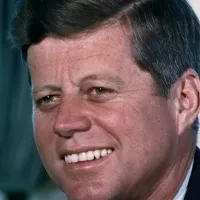
John F Kennedy JFK was the th U S President...

Barack Obama the th U S President - was the...
California is a U S state on the Pacific Coast...

Radar is a radiodetermination system using radio waves to detect...
The Union of Soviet Socialist Republics USSR existed from to...
Trending
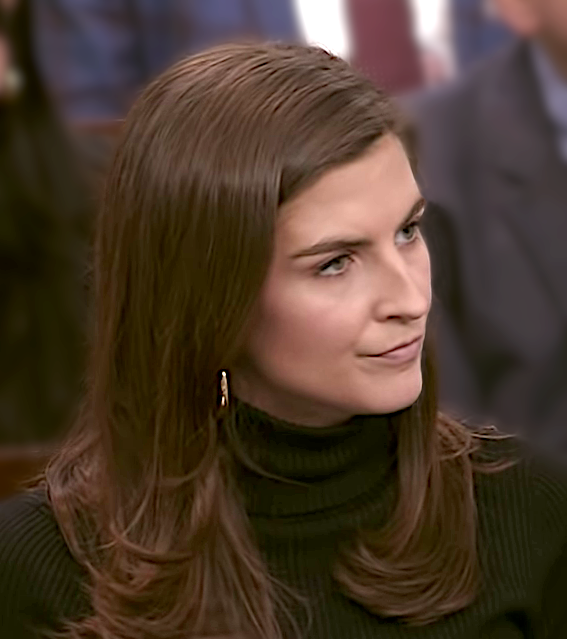
2 months ago Kaitlan Collins Praises Karoline Leavitt; CNN to Host AOC and Sanders Town Hall
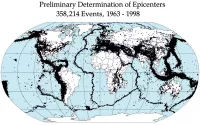
7 days ago Earthquake Rattles Northern California on Thanksgiving: Santa Rosa Area Sees 3.3 Magnitude
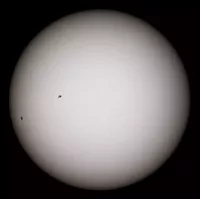
2 days ago Below Deck's Fraser Olender Suffered Heart Attack Due to Vaping at the Age of 33
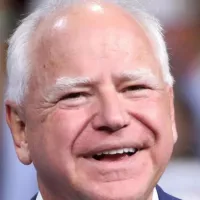
Tim Walz is an American politician educator and Army National Guard veteran currently serving as the st Governor of Minnesota...
8 days ago Anthropic CEO to testify on Chinese AI cyberattack; Chatbots becoming criminals.
11 days ago Exploring David Simon's The Wire: A Masterpiece of Television and Social Commentary
Popular
Matt and Ross Duffer known as the Duffer Brothers are...
Aftyn Alyssa Behn is an American politician currently serving as...

Candace Owens is an American conservative political commentator and author...

XXXTentacion born Jahseh Dwayne Ricardo Onfroy was a controversial yet...

Ilhan Omar is an American politician currently serving as the...
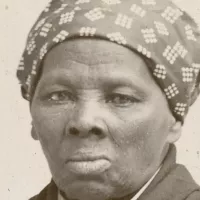
Harriet Tubman was a pivotal American abolitionist and social activist...
